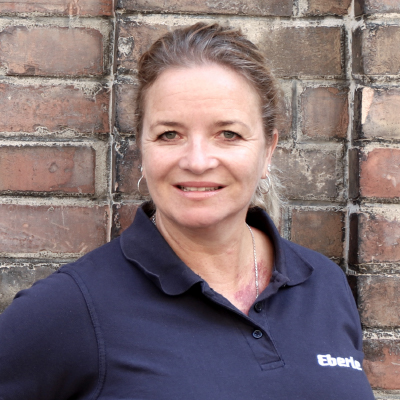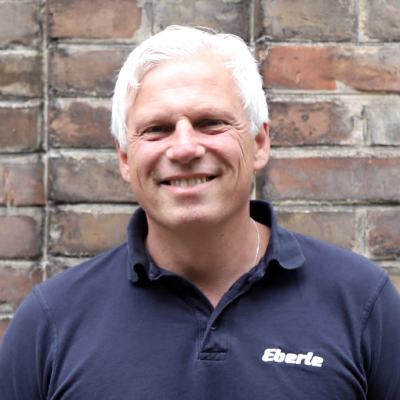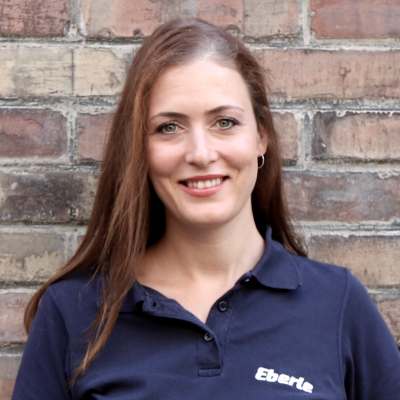Practical knowledge about cutting
Band saw blade geometry
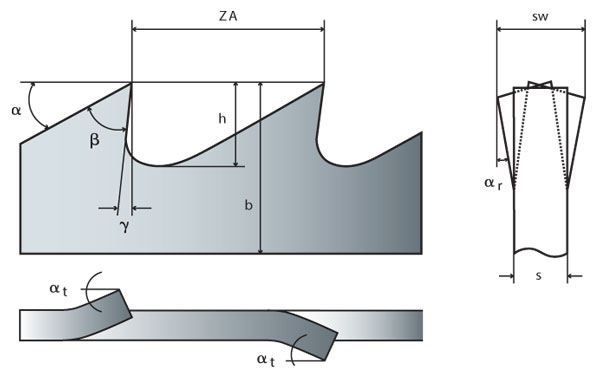
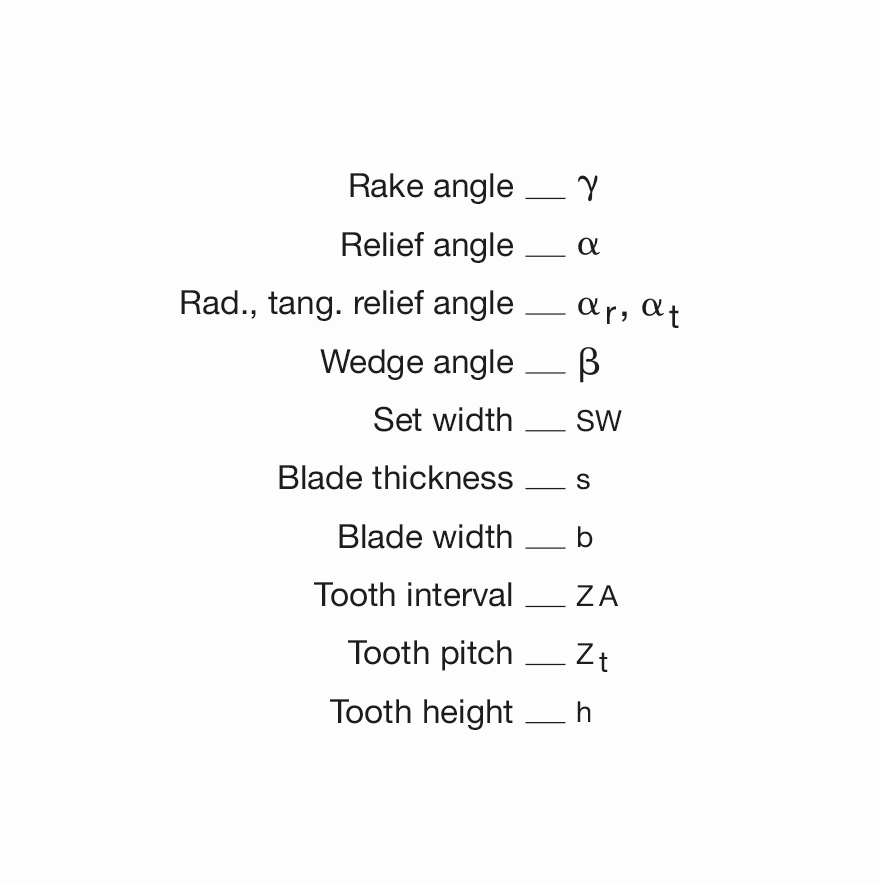
Tooth pitch
Constant tooth pitch
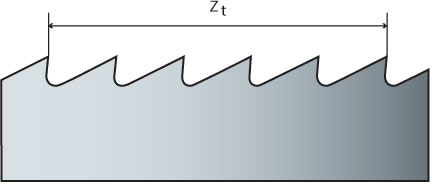
Variable tooth pitch
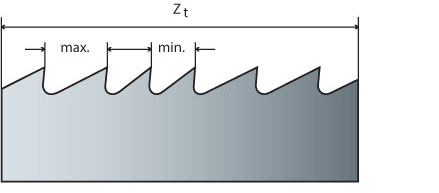
Tooth pitch (tpi) describes the number of teeth per inch (1 inch = 25,4 mm). With band saw blades, a distinction is drawn between constant and variable tooth pitch.
Tooth set
During the setting process the teeth will be bowed side ways to free the blade from chip load. Special sets and special set widths are available upon request. Depending on the application, we offer the following set patterns:
Raker set
R – L – S – R – L – S

Constant set
R – L – R – L – S

Variable set
R+ – L+ – R – L – S

Wave set

Tooth forms
N–TOOTH | neutral rake angle
- short-chip materials
- small work pieces

CS–TOOTH | positive rake angle
- long-chip, tough materials
- universal application

DCS–TOOTH | positive rake angle
- heavy duty, high alloyed work pieces
- large cross-sections

CSP–TOOTH | positive rake angle
- austenitic materials
- nickel-based alloys

CST–TOOTH | positive rake angle
- short-chip materials
- profiles, tubes, bundles

CW–TOOTH | positive rake angle
- low-alloy materials, Aluminum
- mold construction, contours

TR/TRN–TOOTH | variable rake angle
- heavy duty work pieces
- high cutting performance


